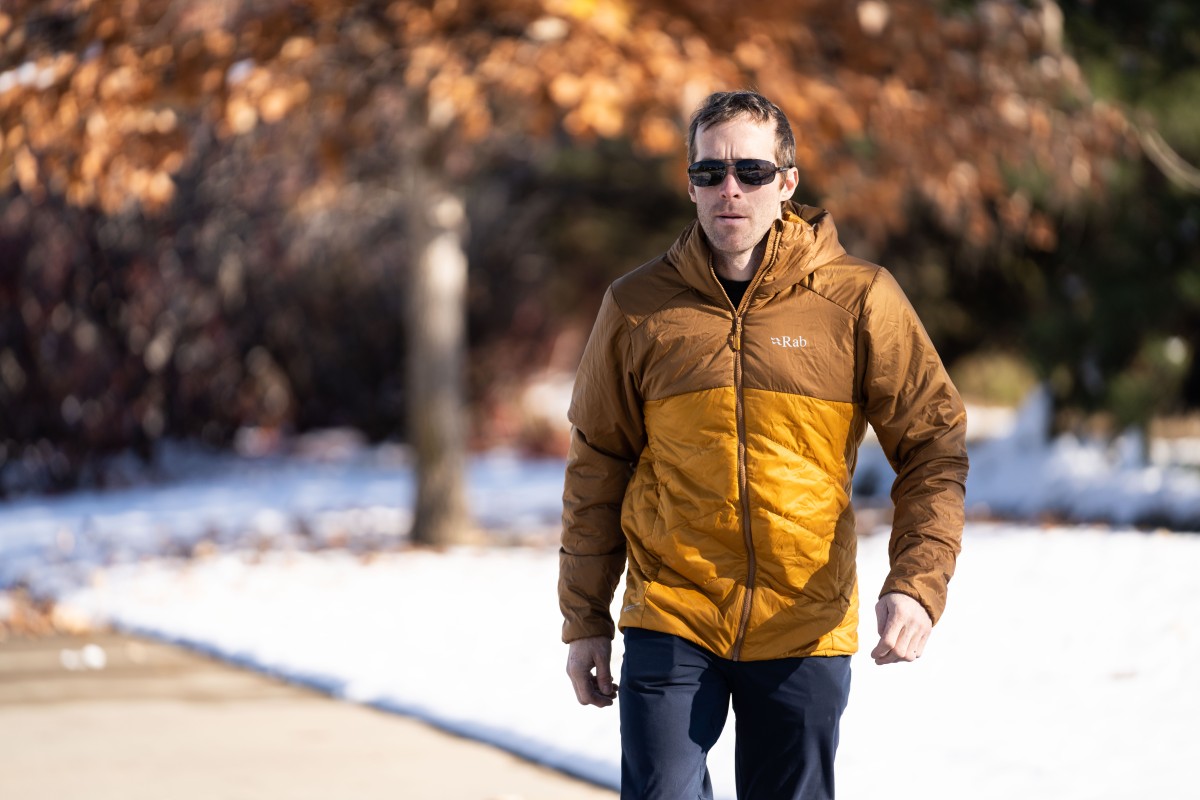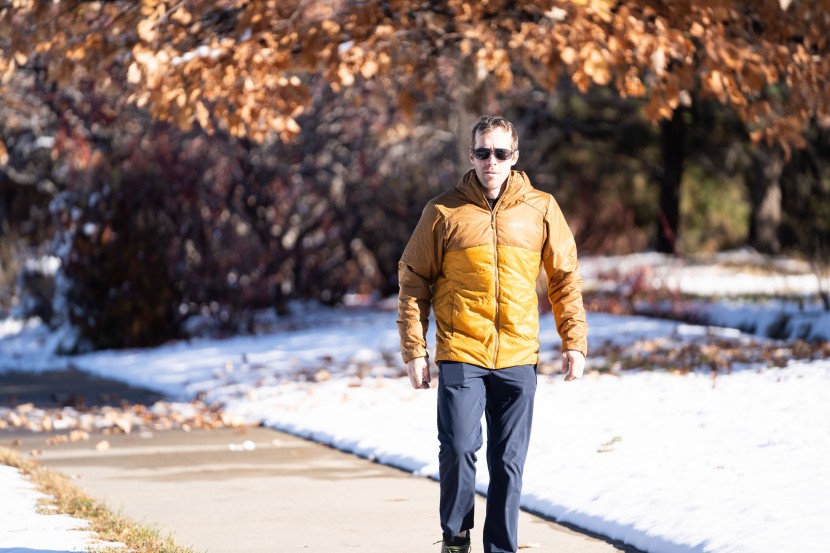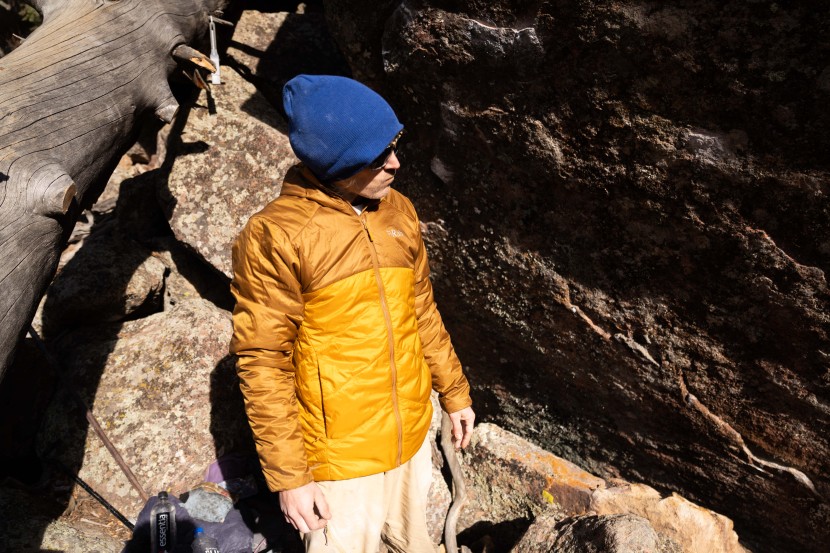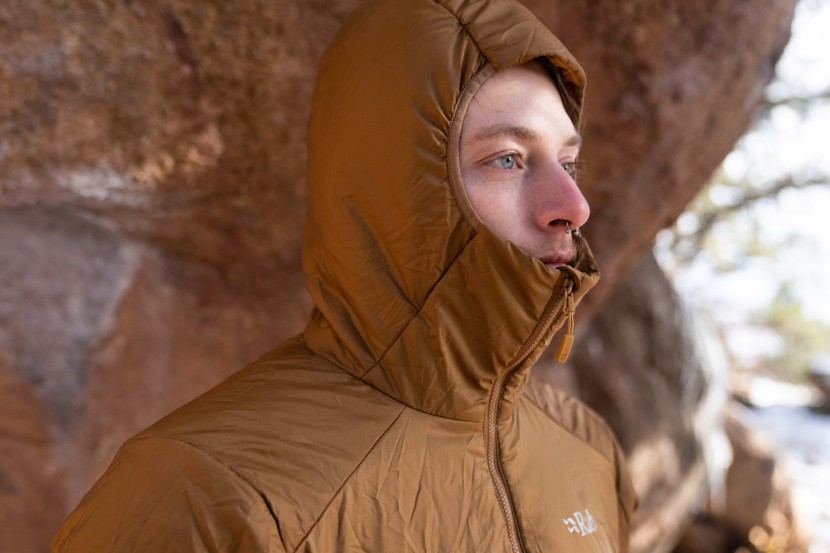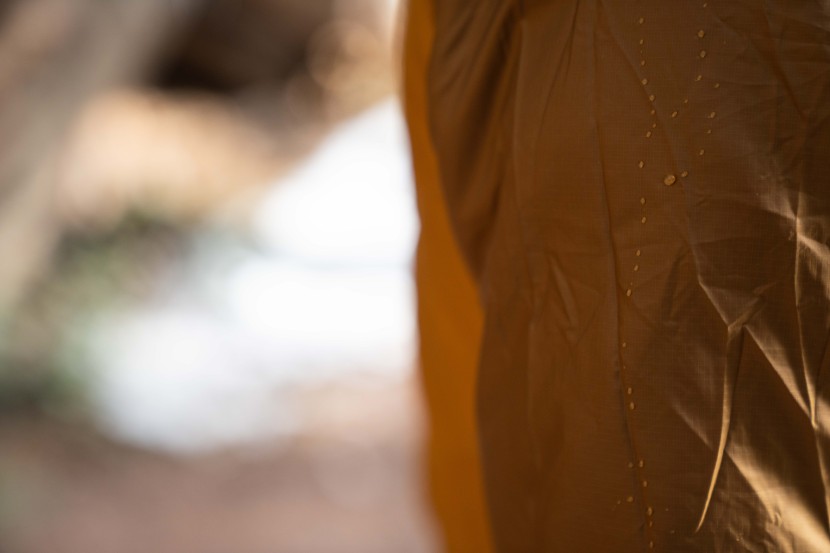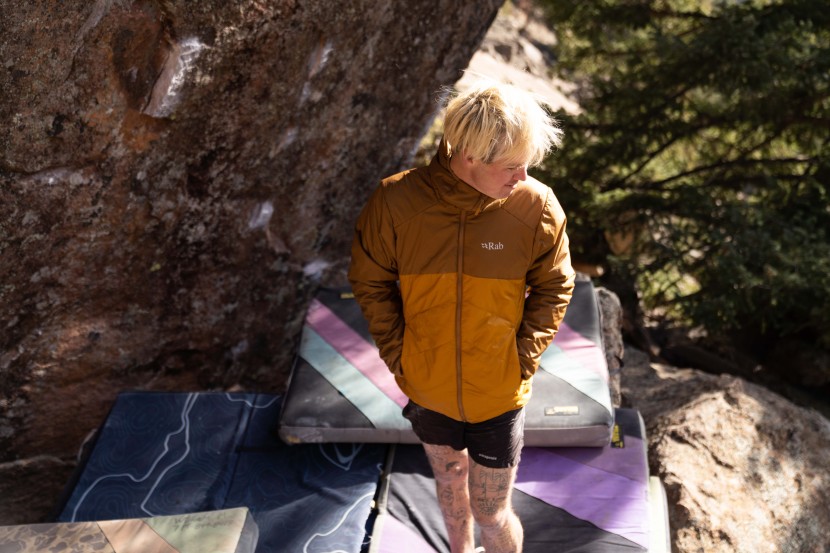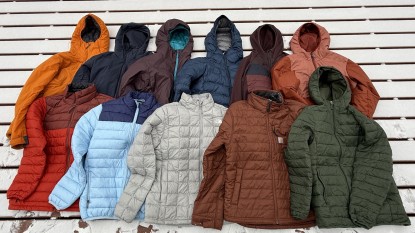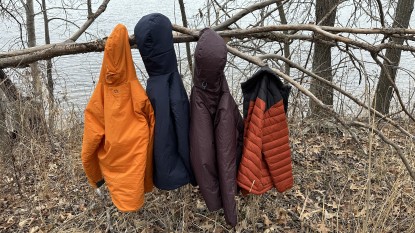Our Verdict
Our Analysis and Test Results
The Rab Xenon 2.0 performed well as the outermost layer in our clothing system thanks to the lightweight recycled Primaloft Silver insulation and the Pertex Quantum windproof fabric outer that kept the jacket warm and windproof. We found the fit to be slightly tight on the back, which caused the sleeves to ride up a bit. We appreciate the jacket's ability to pack into its internal pocket as well as the unperforated (read: seam-free) sheet insulation over the arms and chest, which added to its weather resistance. Though it's not very breathable, this piece works great as a lightweight outer layer.
Warmth
Though relatively light, the Xenon 2.0 uses 60g/m2 of PrimaLoft Silver insulation, which does a good job of retaining heat and boasts one of the better warmth-to-weight ratios of the jackets we tested. The addition of the elasticized, well-fitting hood and the adjustable hem further help trap heat.
While it does a great job of retaining heat, it's designed more as a lightweight piece than as a thick winter parka. Think of the Xenon as a spring or fall jacket or active outer layer for days when the wind is ripping or there's a chance of precipitation. We enjoyed it most often over a base layer and even used it quite a bit in conjunction with a more breathable active mid-layer for a very versatile layering setup.
Weight and Compressibility
If lightweight is one of your favorite attributes, then you will love the Xenon 2.0. The size medium weighed in at a mere 12.56 ounces, which was very nice given how warm the jacket is.
This jacket easily stuffs into its interior zippered chest pocket, which many of the other compressible jackets did not. Its ease of compression coupled with the small packed size helped its ranking here. There is a large and durable clip-in loop designed to hang from a climbing harness for when you need something more than a light wind shell.
Comfort
When it comes to comfort and mobility, this jacket fared decently. We tested in while out bouldering in the Flatirons outside of Boulder, Colorado. However, we noticed that the sleeves felt a bit short, and the shoulders felt tight. We'd recommend going a size up if you're on the cusp. Our testers would have liked some slightly stretchier material in the jacket though the articulated elbows helped somewhat with the jacket's range of motion. Even without adjustment, the hood felt fairly comfortable and insulated well. You won't be able to fit a helmet underneath, though.
The slightly slippery 20D recycled Atmos ripstop lining lacks softness and the movement of some of the stretchier materials found in other active mid-layers. Reminiscent of the inside of a sleeping bag, the material crinkles and makes some noise while wearing it. These minor complaints affected some of the testers, while others weren't bothered by the difference in fabric.
Weather Resistance
The Xenon 2.0 thrives when it comes to weather resistance. Lightweight and packable recycled 30D Pertex Quantum ripstop fabric with fluorocarbon-free DWR makes up the outer fabric. We found it to be the most wind-resistant fabric in our comparative testing, making the jacket act like a well-insulated windbreaker. Since wind tends to attack us on ridges, on the slopes, and in the other areas we often play, we enjoyed the jacket's wind resistance as it positively contributed to its warmth, especially compared to jackets that use stretch fabrics.
While companies typically don't design insulated jackets to be waterproof, many are treated with a DWR (durable water repellent) application that causes water to bead up and run off rather than soaking into the jacket upon contact. Even after multiple uses, the fluorocarbon-free DWR on the Xenon 2.0 performed better than many competitors, with light rain and snow sliding off the jacket. While hiking in the cold and wet Flatirons of Colorado, our testers stayed fairly dry when the weather was a light sprinkle. When heavier precipitation fell, we needed a rain shell for more protection. Furthermore, this jacket dries out very quickly in the sun or a light breeze.
Breathability
Designed more to be wind resistant than breathable, the Atmos fabric did poorly with letting out hot, moist air when our testers charged up hills around the foothills of Colorado. Expectedly, this jacket didn't do as well in terms of its breathability.
Some lighter, more air-permeable material would have allowed our testers to wear the piece while exercising, but that also would have cut down on the jacket's wind resistance. Ultimately, this piece works better as an outer layer and should be taken off when skinning, when hiking fast uphill, or when you need more airflow.
Should You Buy the Rab Xenon 2.0?
The Rab Xenon 2.0 ranks as one of the best insulated outer layers you can buy. Its impressive warmth, light weight, and wind resistance make it ideal as a decently warm option that will keep the wind from chilling you on cold mountain days. While the jacket could perform better in terms of its fit and breathability, the approachable price helps make it a great value and a solid choice in outerwear. We highly recommend this piece for adventurers on a budget.
What Other Insulated Jackets Should You Consider?
The Rab Xenon 2.0 did well across the board. If you want a similar version of this jacket, try the Patagonia Micro Puff Hoody, which weighs a bit less. For something more endurance-oriented, check out the Arc'teryx Atom Hoody.


